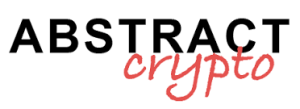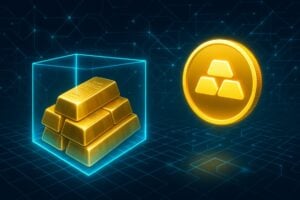In the world of cryptocurrencies, there is often talk of tokenization of gold as a revolution capable of bringing the precious metal into the digital future. However, there is a fundamental distinction that often escapes those not immersed in the crypto universe: tokenizing gold does not mean making it truly “on chain”.
For this reason, CZ, founder of Binance, commented on X about Peter Schiff‘s project:
Saying the obvious. Most people “in crypto” know this, most people “not in crypto” may not understand yet.
Tokenizing gold is NOT “on chain” gold.
It’s tokenizing that you trust some third party will give you gold at some later date, even after their management changes, maybe… https://t.co/KMYfz2dG04
— CZ
BNB (@cz_binance) October 23, 2025
When we talk about tokenized gold, we are referring to a digital asset that represents a quantity of physical gold held by a third party.
In practice, by purchasing a token linked to gold, you are accepting the promise that, at a future time, it will be possible to redeem your physical gold. But this promise is based on a crucial element: trust in an intermediary.
The Role of Trust in Tokenized Solutions
Unlike assets like bitcoin, which exist and move exclusively on the blockchain without the need for intermediaries, gold-backed tokens are based on a system of trust.
Those who purchase these tokens must believe that the company issuing them will be able to deliver the physical gold when requested, even years later, possibly in times of crisis or management changes.
This dynamic was summarized by CZ in his post with the expression “trust me bro token”: essentially, it is a promise that requires blind trust in the counterparty.
Despite blockchain technology being able to ensure transparency on token transactions, the connection with physical gold is always mediated by a third party.
Why “gold coins” have never succeeded
This lack of real decentralization is the main reason why no gold coin project has ever truly gained traction in the crypto world.
Experienced users know well that, unlike Bitcoin, gold-backed tokens do not eliminate counterparty risk. In other words, you do not actually own gold on the blockchain, but only a promise to receive it in the future.
Promises can be broken, especially in unpredictable situations like wars, financial crises, or changes in the management of companies that hold gold.
This element of uncertainty has always hindered the spread of tokenized gold solutions, making them less attractive compared to truly decentralized assets.
The perception between those inside and outside the crypto world
Those who live daily in the cryptocurrency sector are generally aware of these dynamics.
However, those who are approaching the crypto world for the first time can easily confuse the tokenization of gold with an actual transposition of the precious metal onto the blockchain. In reality, the difference is substantial: bitcoin is a native digital asset, while tokenized gold remains always tied to trust in an intermediary.
This distinction is fundamental for understanding the limits and potential of the different solutions offered by blockchain technology. Only assets that are truly “on chain” can guarantee the full autonomy and security typical of cryptocurrencies.
The True Nature of Tokenized Gold
Ultimately, the tokenization of gold does not represent a revolution comparable to that of bitcoin. As long as it is necessary to rely on a third party to redeem one’s physical gold, it can never truly be considered “on chain” gold.
The promise of receiving gold in the future will always be tied to a relationship of trust, with all the risks that come with it.
For this reason, gold coin projects have never managed to capture the crypto market: the lack of decentralization and reliance on intermediaries are difficult obstacles to overcome.
Only the awareness of these dynamics can help investors distinguish between the real innovations of blockchain and the solutions that, while leveraging the technology, do not share its fundamental principles.


